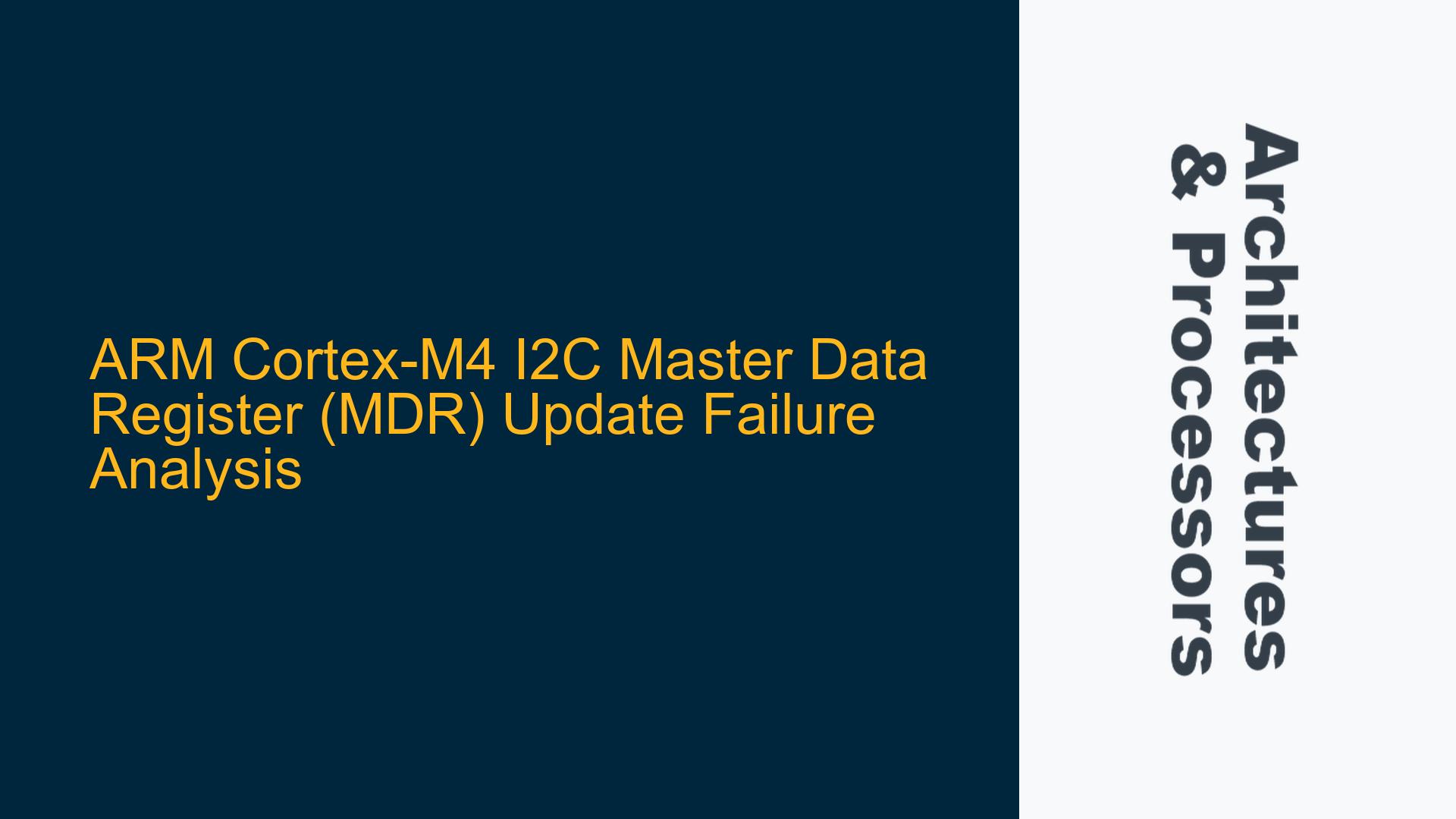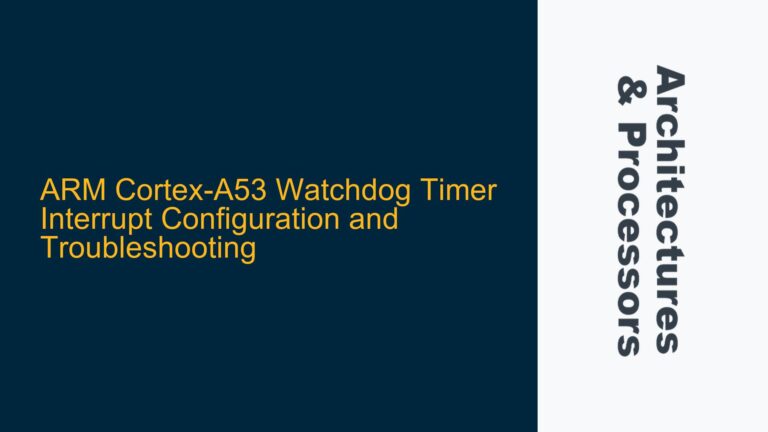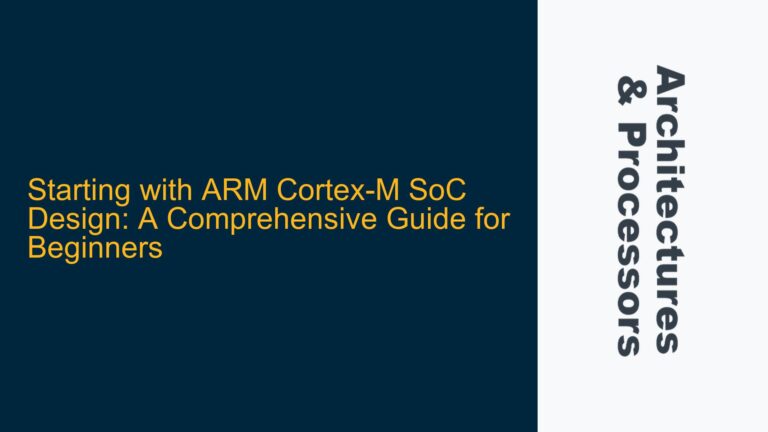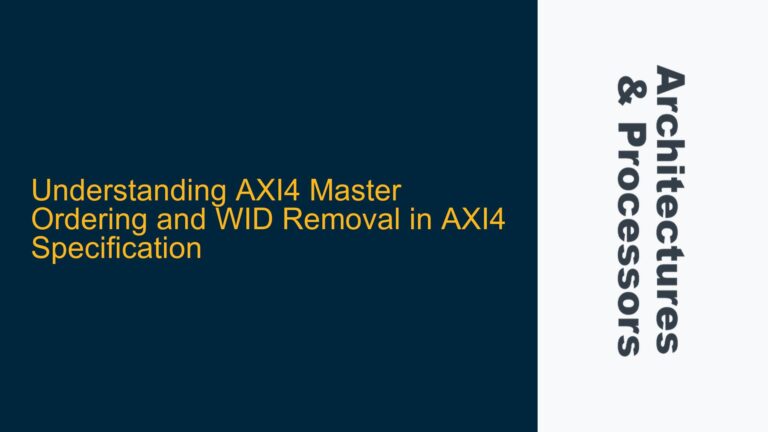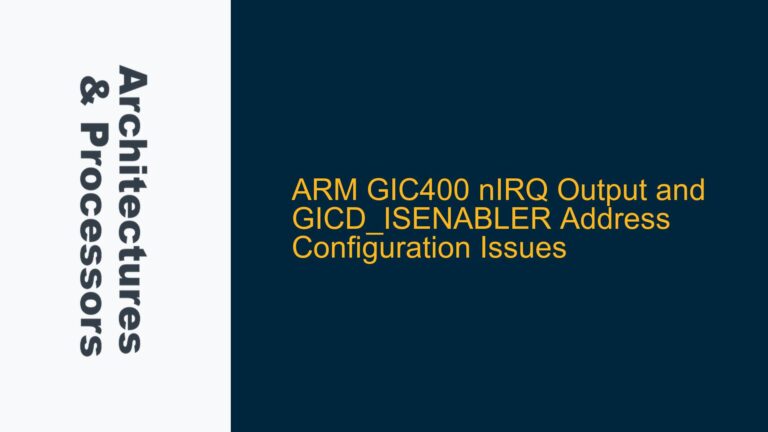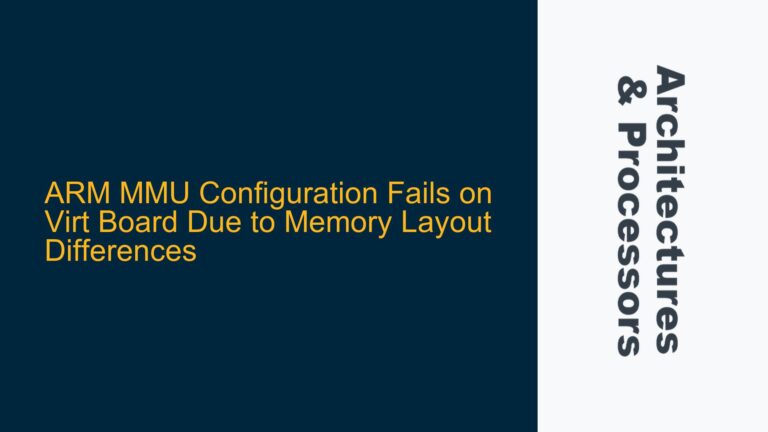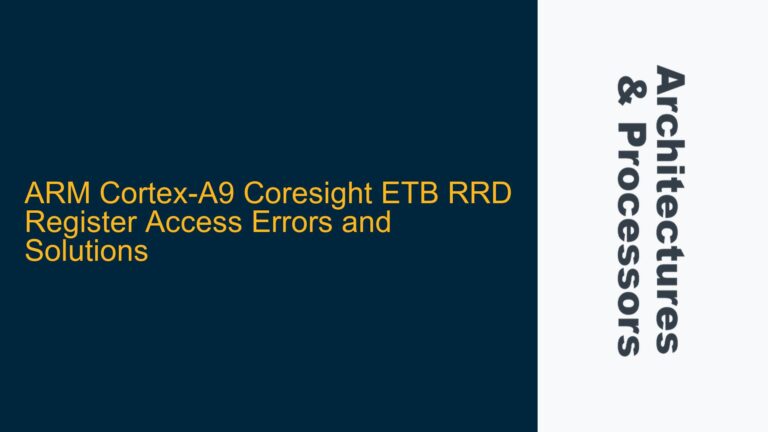I2C Master Data Register (MDR) Not Updating During Data Transmission
The issue at hand involves the I2C Master Data Register (MDR) on an ARM Cortex-M4 microcontroller, specifically within the TM4C1294XL family, not updating as expected during I2C data transmission. The MDR is a critical register in the I2C communication protocol, responsible for holding the data byte to be transmitted or received. When the MDR fails to update, it disrupts the entire I2C communication process, leading to a failure in data transmission and reception. This issue is particularly problematic in scenarios where the I2C master is attempting to send data to a slave device, as the slave will not receive the expected data, and the master will not receive an acknowledgment (ACK) from the slave.
The MDR is typically written to by the application software using a function such as I2CMasterDataPut(), which is part of the TivaWare peripheral driver library provided by Texas Instruments (TI). In the provided code, the function I2CMasterDataPut(I2C0_BASE, pui32DataTx[ui32Index]); is used to write data into the MDR. However, the data is not being written to the MDR, as evidenced by the lack of an ACK from the slave device. This suggests that the MDR is either not being written to correctly, or the data is being overwritten or lost before it can be transmitted.
The failure to update the MDR can be attributed to several potential causes, including incorrect initialization of the I2C peripheral, timing issues, or hardware configuration problems. Additionally, the I2C protocol itself is sensitive to timing and signal integrity, and any deviation from the expected behavior can lead to communication failures. In the following sections, we will explore the possible causes of this issue in detail and provide a comprehensive set of troubleshooting steps and solutions to resolve the problem.
Potential Causes of MDR Update Failure in I2C Master Mode
1. Incorrect I2C Peripheral Initialization
One of the most common causes of the MDR not updating is incorrect initialization of the I2C peripheral. The I2C peripheral must be properly configured before it can be used for communication. This includes enabling the I2C module, configuring the clock speed, setting the slave address, and enabling the necessary interrupts (if used). If any of these steps are not performed correctly, the I2C peripheral may not function as expected, leading to issues such as the MDR not updating.
In the provided code, the I2C peripheral is initialized using the following sequence:
SysCtlPeripheralEnable(SYSCTL_PERIPH_I2C0);
SysCtlPeripheralEnable(SYSCTL_PERIPH_GPIOB);
GPIOPinConfigure(GPIO_PB2_I2C0SCL);
GPIOPinConfigure(GPIO_PB3_I2C0SDA);
GPIOPinTypeI2CSCL(GPIO_PORTB_BASE, GPIO_PIN_2);
GPIOPinTypeI2C(GPIO_PORTB_BASE, GPIO_PIN_3);
I2CLoopbackEnable(I2C0_BASE);
I2CMasterInitExpClk(I2C0_BASE, SysCtlClockGet(), false);
I2CSlaveEnable(I2C0_BASE);
I2CSlaveInit(I2C0_BASE, SLAVE_ADDRESS);
I2CMasterSlaveAddrSet(I2C0_BASE, SLAVE_ADDRESS, false);
While this sequence appears to be correct, there are several potential pitfalls that could lead to the MDR not updating. For example, if the clock speed is not set correctly, the I2C peripheral may not be able to communicate at the desired speed, leading to timing issues. Additionally, if the GPIO pins are not configured correctly, the I2C signals may not be transmitted or received properly, leading to communication failures.
2. Timing Issues in I2C Communication
Timing is critical in I2C communication, and any deviation from the expected timing can lead to communication failures. The I2C protocol specifies strict timing requirements for the start condition, stop condition, data transmission, and acknowledgment. If the timing is not adhered to, the I2C peripheral may not function correctly, leading to issues such as the MDR not updating.
In the provided code, the I2C communication is handled using a polling method, where the application software waits for the I2C peripheral to complete each operation before proceeding to the next one. This approach can lead to timing issues if the software does not wait long enough for the I2C peripheral to complete its operations. For example, if the software does not wait for the I2C master to complete the transmission of a data byte before attempting to write the next byte to the MDR, the MDR may not be updated correctly.
3. Hardware Configuration Issues
Hardware configuration issues can also lead to the MDR not updating. The I2C protocol requires pull-up resistors on the SDA and SCL lines to ensure proper signal levels. If the pull-up resistors are not present or are not of the correct value, the I2C signals may not reach the required voltage levels, leading to communication failures. Additionally, if the I2C lines are not properly connected or if there is a short circuit or open circuit on the I2C lines, the I2C peripheral may not function correctly.
In the provided code, the I2C lines are configured as open-drain with weak pull-ups using the following functions:
GPIOPinTypeI2CSCL(GPIO_PORTB_BASE, GPIO_PIN_2);
GPIOPinTypeI2C(GPIO_PORTB_BASE, GPIO_PIN_3);
While this configuration is correct for most applications, it is important to ensure that the hardware is properly configured and that the pull-up resistors are present and of the correct value. If the pull-up resistors are not present or are not of the correct value, the I2C signals may not reach the required voltage levels, leading to communication failures.
4. Incorrect Use of I2C Loopback Mode
The provided code uses I2C loopback mode, which internally connects the I2C master and slave terminals. This mode is useful for debugging I2C operations, as it allows the application to send data as a master and receive data as a slave without the need for external hardware. However, if loopback mode is not used correctly, it can lead to issues such as the MDR not updating.
In the provided code, loopback mode is enabled using the following function:
I2CLoopbackEnable(I2C0_BASE);
While this function is correctly used in the provided code, it is important to ensure that loopback mode is used correctly and that the application software is aware of the implications of using loopback mode. For example, in loopback mode, the I2C master and slave are internally connected, so the application software must ensure that the data is correctly transmitted and received within the same I2C peripheral.
Troubleshooting Steps, Solutions, and Fixes for MDR Update Failure
1. Verify I2C Peripheral Initialization
The first step in troubleshooting the MDR update failure is to verify that the I2C peripheral is properly initialized. This includes ensuring that the I2C module is enabled, the clock speed is set correctly, the GPIO pins are configured correctly, and the necessary interrupts are enabled (if used). The following steps can be used to verify the I2C peripheral initialization:
-
Check that the I2C module is enabled: Ensure that the
SysCtlPeripheralEnable(SYSCTL_PERIPH_I2C0);function is called before any other I2C functions. This function enables the I2C module and must be called before the I2C peripheral can be used. -
Verify the clock speed: Ensure that the clock speed is set correctly using the
I2CMasterInitExpClk()function. The clock speed must be set to a value that is supported by both the I2C master and slave devices. If the clock speed is set too high, the I2C peripheral may not be able to communicate at the desired speed, leading to timing issues. -
Check the GPIO pin configuration: Ensure that the GPIO pins are configured correctly using the
GPIOPinConfigure()andGPIOPinTypeI2CSCL()functions. The GPIO pins must be configured as open-drain with weak pull-ups to ensure proper signal levels on the I2C lines. -
Verify the slave address: Ensure that the slave address is set correctly using the
I2CSlaveInit()andI2CMasterSlaveAddrSet()functions. The slave address must match the address of the slave device that the I2C master is communicating with.
2. Address Timing Issues in I2C Communication
Timing issues can be addressed by ensuring that the application software waits for the I2C peripheral to complete each operation before proceeding to the next one. The following steps can be used to address timing issues:
-
Wait for the I2C master to complete the transmission: Ensure that the application software waits for the I2C master to complete the transmission of a data byte before attempting to write the next byte to the MDR. This can be done by polling the
I2CMasterBusy()function, which returnstrueif the I2C master is busy andfalseif the I2C master is idle. -
Check the I2C status registers: The I2C peripheral provides several status registers that can be used to monitor the status of the I2C communication. For example, the
I2CMasterBusy()function can be used to check if the I2C master is busy, and theI2CSlaveStatus()function can be used to check the status of the I2C slave. These status registers can be used to ensure that the I2C peripheral is functioning correctly and that the timing requirements are being met.
3. Resolve Hardware Configuration Issues
Hardware configuration issues can be resolved by ensuring that the I2C lines are properly connected and that the pull-up resistors are present and of the correct value. The following steps can be used to resolve hardware configuration issues:
-
Check the I2C line connections: Ensure that the I2C lines (SDA and SCL) are properly connected between the I2C master and slave devices. If the I2C lines are not properly connected, the I2C signals may not reach the required voltage levels, leading to communication failures.
-
Verify the pull-up resistors: Ensure that the pull-up resistors are present and of the correct value. The I2C protocol requires pull-up resistors on the SDA and SCL lines to ensure proper signal levels. If the pull-up resistors are not present or are not of the correct value, the I2C signals may not reach the required voltage levels, leading to communication failures.
4. Correct Use of I2C Loopback Mode
If loopback mode is being used, it is important to ensure that it is used correctly and that the application software is aware of the implications of using loopback mode. The following steps can be used to ensure the correct use of loopback mode:
-
Verify loopback mode is enabled correctly: Ensure that loopback mode is enabled using the
I2CLoopbackEnable()function. This function internally connects the I2C master and slave terminals, allowing the application to send data as a master and receive data as a slave without the need for external hardware. -
Ensure data is correctly transmitted and received: In loopback mode, the I2C master and slave are internally connected, so the application software must ensure that the data is correctly transmitted and received within the same I2C peripheral. This can be done by verifying that the data sent by the I2C master is correctly received by the I2C slave and vice versa.
5. Debugging and Monitoring I2C Communication
In addition to the above steps, it is important to debug and monitor the I2C communication to identify any issues that may be causing the MDR not to update. The following steps can be used to debug and monitor the I2C communication:
-
Use a logic analyzer: A logic analyzer can be used to monitor the I2C signals and verify that the I2C communication is functioning correctly. The logic analyzer can be used to capture the I2C signals and analyze the timing and signal levels to identify any issues that may be causing the MDR not to update.
-
Enable debug messages: Enable debug messages in the application software to monitor the status of the I2C communication. Debug messages can be used to print the status of the I2C peripheral, the data being transmitted and received, and any errors that may occur during the I2C communication.
-
Check the I2C error registers: The I2C peripheral provides several error registers that can be used to identify any errors that may occur during the I2C communication. For example, the
I2CMasterErr()function can be used to check if any errors have occurred during the I2C communication. These error registers can be used to identify and resolve any issues that may be causing the MDR not to update.
6. Review the Manufacturer’s Documentation
Finally, it is important to review the manufacturer’s documentation for the I2C peripheral to ensure that the application software is using the I2C peripheral correctly. The manufacturer’s documentation provides detailed information on the I2C peripheral, including the register map, timing requirements, and error handling. The following steps can be used to review the manufacturer’s documentation:
-
Review the register map: The register map provides detailed information on the I2C peripheral registers, including the MDR. The register map can be used to verify that the application software is correctly writing to and reading from the I2C peripheral registers.
-
Check the timing requirements: The timing requirements provide detailed information on the timing requirements for the I2C communication. The timing requirements can be used to verify that the application software is adhering to the timing requirements and that the I2C communication is functioning correctly.
-
Review the error handling: The error handling provides detailed information on the error handling for the I2C peripheral. The error handling can be used to identify and resolve any errors that may occur during the I2C communication.
By following these troubleshooting steps and solutions, the issue of the MDR not updating during I2C data transmission can be resolved, ensuring that the I2C communication functions correctly and that the data is transmitted and received as expected.
